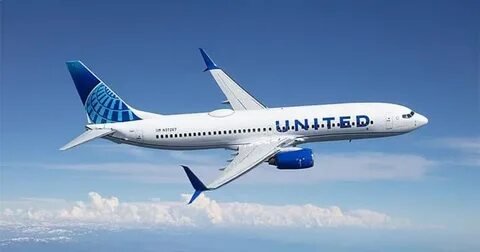On May 27, 2025, United Airlines Flight UA770, a Boeing 787-9 Dreamliner, experienced a mid-flight emergency that led to an unscheduled diversion. The flight, originating from Barcelona El Prat Airport (BCN) and bound for Chicago O’Hare International Airport (ORD), was approximately 90 minutes into its journey when the crew detected a potential issue with the cabin pressurization system. Prioritizing passenger safety, the pilots declared a general emergency by squawking 7700 and diverted to London Heathrow Airport (LHR), one of Europe’s busiest and best-equipped airports for handling such situations.
Understanding the Emergency Diversion
What Is a “Squawk 7700”?
In aviation, an aircraft transmits the squawk 7700 code to indicate a general emergency. This code alerts air traffic control and other aircraft in the vicinity to prioritize the distressed flight, ensuring immediate assistance and clearance. The use of this code signifies the crew’s commitment to safety and their proactive approach in managing potential in-flight emergencies.
Why London Heathrow?
The decision to divert to London Heathrow was strategic. Heathrow’s extensive infrastructure, including multiple runways, advanced medical facilities, and proximity to major aviation hubs, made it an ideal choice for handling the emergency. The airport’s capability to accommodate large aircraft and manage emergency situations efficiently ensured a safe landing for Flight UA770.
The In-Flight Experience
Cabin Atmosphere During the Diversion
During the diversion, passengers aboard Flight UA770 experienced a sudden change in cabin altitude and increased engine noise as the aircraft descended. While some passengers were concerned, the flight crew reassured most of them with consistent updates.Cabin attendants checked seat belts, provided instructions, and remained composed throughout the process. Upon landing, United Airlines provided support in the form of meal vouchers, hotel accommodations for overnight stays, and rebooking assistance for continued travel.
Crew’s Role in Managing the Situation
The professionalism and calm demeanor of the flight crew played a pivotal role in managing the situation. Their prompt decision to declare an emergency and divert to Heathrow, coupled with clear communication with passengers, helped mitigate potential panic and ensured a smooth and safe landing. The crew’s adherence to standard emergency protocols exemplifies the rigorous training and preparedness inherent in the aviation industry.
Post-Landing Procedures
Aircraft Inspection and Maintenance
Emergency services and ground personnel met the aircraft upon landing at London Heathrow. Ground personnel towed the Boeing 787-9 to Gate B44, where engineers conducted a thorough inspection of the cabin pressurization system and related components. Although the team did not immediately disclose the exact cause of the anomaly, they conducted such inspections as part of standard procedure to ensure the aircraft’s airworthiness before returning it to service.
Passenger Assistance and Rebooking
United Airlines promptly arranged for alternative flights for passengers, provided hotel accommodations for those requiring overnight stays, and issued meal vouchers. The airline’s swift response underscores its commitment to passenger care, even during unforeseen disruptions. Additionally, United Airlines coordinated with local authorities and aviation experts to investigate the incident and implement corrective measures if necessary.
Broader Implications and Lessons Learned
Importance of Safety Protocols
The diversion of Flight UA770 highlights the critical importance of stringent safety protocols in aviation. The crew’s decision to prioritize passenger safety by diverting to a well-equipped airport exemplifies the industry’s commitment to maintaining high safety standards. Such incidents reinforce the necessity for continuous training, regular maintenance, and adherence to established procedures to mitigate risks and ensure the safety of all onboard.
Impact on Airline Operations
While the diversion caused temporary disruptions, it also provided valuable insights into the resilience and adaptability of airline operations. The incident prompted a review of flight scheduling, emergency response strategies, and communication protocols to enhance efficiency and minimize the impact of similar events in the future. Airlines worldwide can draw lessons from this event to bolster their operational readiness and passenger service standards.
Conclusion
The emergency diversion of United Airlines Flight UA770 serves as a testament to the effectiveness of aviation safety protocols and the professionalism of airline crews. By prioritizing passenger safety and adhering to established procedures, the crew managed the situation efficiently, ensuring a safe outcome for all involved. This incident underscores the importance of preparedness, communication, and swift action in maintaining the high safety standards that passengers expect and rely upon in air travel.
Frequently Asked Questions (FAQs)
Q1: What caused United Airlines Flight UA770 to divert to London?
United Airlines did not immediately disclose the exact cause of the diversion. However, the crew detected a potential issue with the cabin pressurization system, prompting the decision to divert to London Heathrow for safety reasons.
Q2: Were passengers and crew safe during the emergency diversion?
Upon landing at London Heathrow, the crew safely accounted for all 257 passengers and 12 crew members aboard Flight UA770. There were no reported injuries or incidents during the emergency diversion.
Q3: How did United Airlines assist passengers after the diversion?
United Airlines provided meal vouchers, hotel accommodations for overnight stays, and rebooking assistance for passengers affected by the diversion. The airline’s swift response ensured minimal disruption to travelers’ plans.
Q4: What is the significance of squawking 7700 in aviation?
Pilots squawk 7700 as an emergency transponder code to indicate a general emergency.This code alerts air traffic control and other aircraft in the vicinity to prioritize the distressed flight, facilitating immediate assistance and clearance.
Q5: Will United Airlines Flight UA770 resume its regular schedule?
Yes, after a thorough inspection and necessary maintenance, United Airlines Flight UA770 resumed its regular schedule. The airline followed all safety protocols before returning the aircraft to service.

